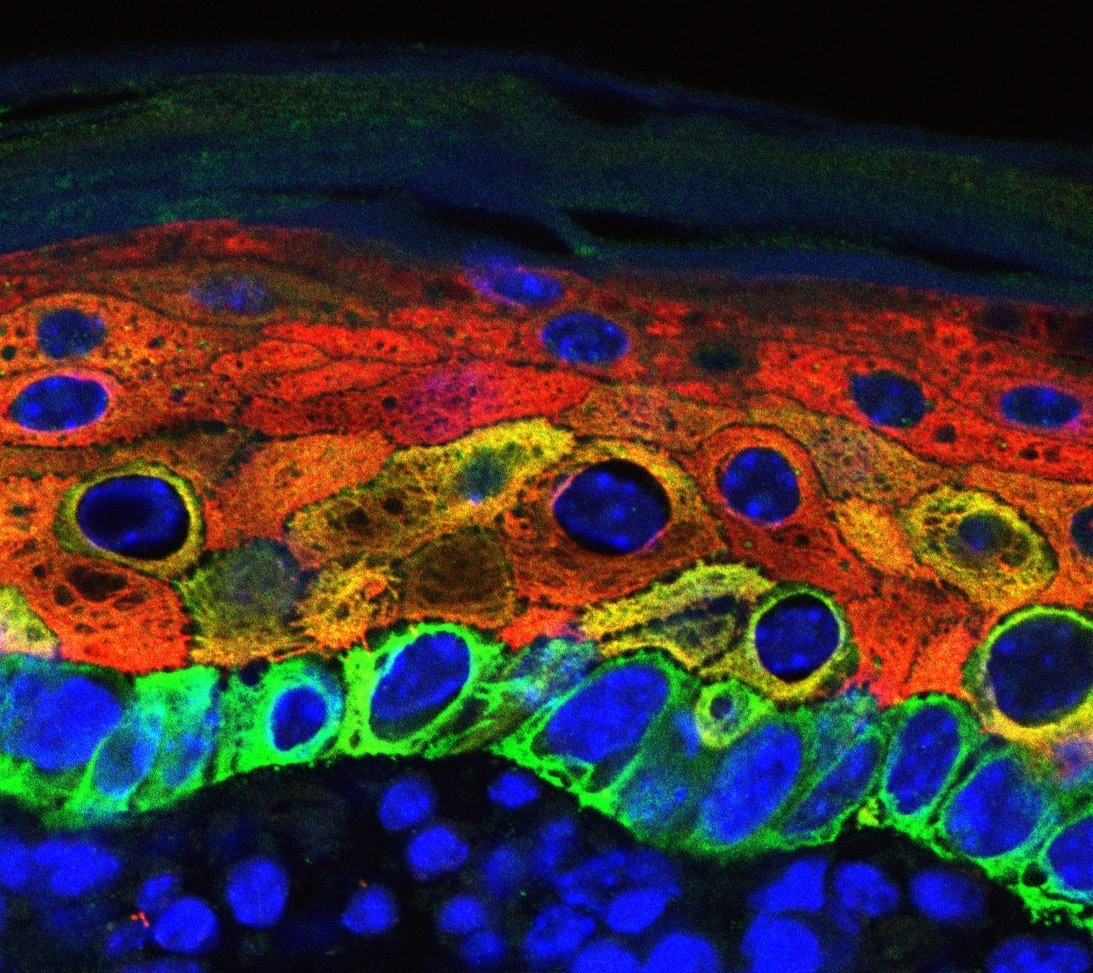Mammalian polarity proteins in skin homeostasis
How cell morphology is coordinated in the context of an entire organ is an intriguing question in biology. We recently identified important functions of conserved polarity proteins in tissue morphogenesis, homeostasis and pathogenesis in mammals. Epidermal inactivation of Par3 in mice disturbed the epidermal barrier and differentiation and resulted in hair follicle stem cell loss and premature aging (Ali et al., 2016). Further, polarity protein distribution in developing skin is under control of TOR signaling (Ding et al., 2016), whereas in differentiated keratinocytes Par3-mediated tight junction barrier function was crucial to counteract common viral infections (Rahn et al., 2016), identifying Par3 as a gatekeeper of mammalian tissue integrity.
Ongoing work within this DFG-funded project addresses how polarity and intercellular adhesion is modulated during epidermal homeostasis and regeneration to unravel how polarity of individual cells is coordinated to ensure skin integrity at the tissue level.



